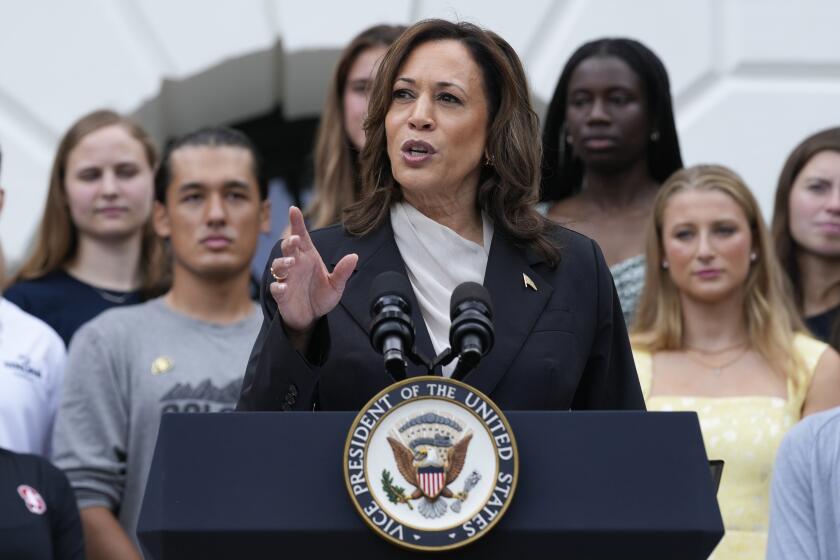Letters to the Editor: A public option isn’t enough to save healthcare in California

To the editor: Missing from UC Berkeley professors Richard Scheffler and Stephen Shortell’s op-ed article on a California public health option are the details as to who, in such a system, would make the final call on decisions for treatment prescribed by doctors.
At present, all too often the valid prescribing authority of “in-network” doctors is usurped by an almost impenetrable wall of bureaucracy staffed by individuals who lack the relevant medical training.
From my own personal experience, I can cite examples of coverage and cost decisions being made by a high-level person whose doctorate was not in medicine but in philosophy, and a cardiac issue that was denied not by a cardiac specialist, but by an on-staff urologist.
I’m all for booting the healthcare-for-profit companies out of California, but only if they are replaced with a system that benefits the patient not just financially, but has at its core patients’ best interests, no matter the cost.
Bill Waxman, Simi Valley
..
To the editor: A medical system that provides incentives to keep participants healthy and is based on capitation already exists. It is called Medicare Advantage, or Medicare Part C.
Would it work? Already, more than half of all eligible Medicare beneficiaries participate in such a plan, voluntarily. Why not give this a try?
Turning a California public option over to the insurance industry, just like Medicare does, would allow the industry to negotiate with health providers and participants, which is exactly what they are doing today.
It is worth considering.
Kevin Minihan, Los Angeles
..
To the editor: What California does not need is yet another layer of bureaucratic complication to the already complex and expensive health insurance system we have now. There are countless different insurance plans that doctors, labs, hospitals and clinics have to sort through to be paid for the care they provide.
The so-called public option that Scheffler and Shortell suggest would charge premiums that they say “would be adjusted for each patient’s age, gender, health status and related characteristics likely to influence need for care.”
Who is going to do all that adjusting? Administrative costs already account for about 20% of our insurance premiums as it is.
The only solution to the healthcare mess is a single-payer system, a public health insurance plan that covers everyone from womb to tomb. It would be public insurance, private care — in other words, Medicare for all.
Don Schroeder, North Hollywood






